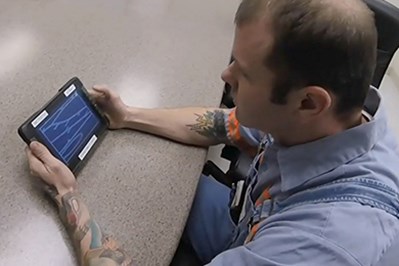Barrick says “sprinting to success” is the “agile method [that] connects our in-house app developers with our mine operators to build, test, and refine new digital products that our people will actually want to use.
“Frequent input from our mine operators is critical to the agile development process we’re using to create digital products for better, faster, and safer mining. The process consists of short work cycles known as sprints, which start when our in-house developers build new features into an app. Then, the developers gather feedback on the features from our mine operators—the people who will actually work with the final product—and build that feedback into a new iteration of the app, starting a new sprint.
“Most recently, our teams have been working in two-week sprints to develop a new app that improves communication and workflows in Barrick’s underground operations.”
“A key aspect of the agile methodology is to ‘fail fast,’” says Project Lead Gordon Fellows, who developed and implemented a similar digital system at the Chelopech mine in Bulgaria. “We don’t want to spend all of this time developing a tool only to find out that it, or aspects of it, aren’t going to work well for the intended job.”
Individual sessions with front-line operators give in-house developers instant feedback on the new digital products Barrick is creating.
The goal of these sprints is to quickly develop a ‘Minimal Viable Product’—a software product with some degree of functionality that operators can use, evaluate and continuously improve. This is in contrast to a more traditional research and development approach, where an organization invests substantial time and money in a solution that is later rolled out to end users for the first time. In this scenario, people might not find the solution useful or practical, and if that’s the case, resources will have been wasted.
“The agile approach is designed to make tools that our people not only find useful, but that they also want to use,” says Ed Humphries, Barrick’s Head of Digital Transformation. “It’s really the operators who are making these tools, and the Digital Transformation team is facilitating that process.”
The new app is being trialed at Barrick’s Cortez operations in Nevada as part of a pilot project. Temporary tablet mounts have been customized for five types of equipment, and have been installed in order to gain operator feedback on ease of use and effectiveness. The app communicates with Wi-Fi tags installed on 24 pieces of equipment. Over 40 tags have been provided to four crews for the trial, providing equipment location information in real-time.
The pilot, which is nearly complete, is set to come in under budget. Given the substantial efficiency improvements made possible by the app, Barrick has decided to proceed with an implementation that encompasses the entire Cortez underground. The implementation will begin in April and run through June. This will allow the project team to collect data from multiple pieces of underground equipment, loaders, jumbos, and the trucks and bolters that operate underground.
One of the biggest challenges with implementation has been identifying network chokepoints, which can affect how quickly the app is able to send and receive information. That said, the app is equipped to store data and share it with supervisors and colleagues when operators are in range of one of the numerous Wi-Fi access points underground. Work is well underway in the Cortez underground to upgrade its existing underground Wi-Fi network.
“The goal is to get the ore out of the mine as quick as possible and stay efficient,” says Josh Nelson, an underground miner at Cortez. “We get our task lists every morning and we like to see it gone by the end of shift.”











